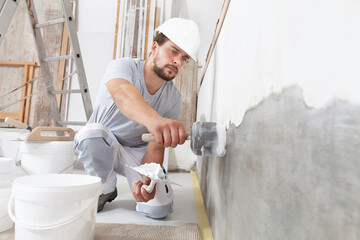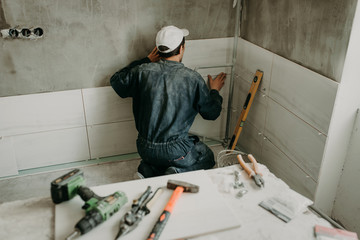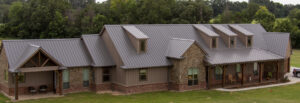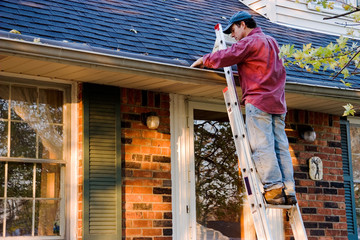Mold, rot, and other water damage are relatively easy to spot, but other issues can be harder to identify. One of the most common problems is air leaks that can drive up energy bills. To repair a split, load a caulking gun with waterproof caulk and apply a generous bead into the crack. Smooth the caulk with a putty knife and wait 24 hours for it to cure. To learn more about siding repair, visit Siding Repair Charleston SC.

Cracks in siding aren’t just an eyesore, they can allow moisture into the inner wall systems of your home. Moisture can lead to rot and mold, damaging your home’s internal parts. It can also increase your energy bills. Cracked and missing siding should be repaired immediately to avoid more serious issues.
Depending on the size of the crack, you may be able to fix it with a simple caulking job. This is a good option for small holes and cracks less than 1/16 inch wide. If the crack is larger than this, you’ll need to consider patching the area with a piece of matching vinyl siding. Before you start your repair project, clean the damaged area with soap and water to make sure it is free of dirt and debris. You should give the surface a couple hours to dry before moving on to the next step.
Use a caulking gun to put a bead of caulk around the outside edge of the cracked area. Smooth the bead with your putty knife to make it as smooth and even as possible. Use a color that matches the rest of your siding. Once the caulk is completely dry, paint over it with a brush to conceal the crack.
Holes and cracks in your siding can be caused by many things including harsh weather, holiday decorating mishaps, or simply age and wear. Regardless of the cause, they need to be repaired as quickly as possible to prevent rain water from seeping into areas behind your siding boards and causing wood rot or other interior damage.
Once the holes are filled and sanded down, you can use a paint specially formulated for exteriors to cover the repairs. Then, it’s important to apply a protective sealant or moss killer to the area to keep moisture and other elements out of your siding.
While this type of sealant isn’t as effective as caulk, it is a quick and inexpensive way to protect your siding. Choosing the right product for your needs depends on your budget, the severity of the damage, and how much time you want to spend working on your home.
Splits
If a split in your siding is the result of a nail that was hammered too hard, correct the underlying problem before repairing the cladding. Make sure the nails used are hot-dipped galvanized, which will give them the highest resistance to corrosion. You can also use stainless steel nails, which have a superior strength and durability. It’s important to always drill and countersink the nails before hammering them into place. This will minimize the likelihood that you’ll split the siding boards when you reattach them to the house.
Splits in wood siding can also be caused by moisture in the boards, particularly at the ends of the boards. These areas are more likely to absorb moisture and can lead to rot and insect infestation. The good news is that splits in cedar siding can usually be repaired and reattached. However, it’s important to remember that this is a job best left to professionals who are trained to inspect and repair siding.
Vinyl siding can also develop splits in the panels from constant exposure to changes in temperature and humidity. This is because siding expands and contracts as it adjusts to the weather. Eventually, this puts stress on the siding, which can cause it to break apart from its neighbors.
Most vinyl siding repair kits contain special fiberglass cloth, which is embedded into a resin mixture to facilitate adhesion to the damaged siding board. This makes it possible to fix a split that would otherwise be too large for most vinyl repair techniques.
To repair a split in vinyl, first cut off any old caulk or paint that connects the broken panel to its neighbors. This can be done with a utility knife or power saw. Once you’ve removed the old caulk or paint, expose the fasteners that hold the damaged panel to the sheathing with a pry bar or claw hammer. You may need to use a hammer and screwdriver to loosen any nails in the panel.
Once you’ve exposed the fasteners, remove the broken panel from the sheathing and cut a new replacement piece to size with a saw or utility knife. Once you have a replacement panel, install it by hooking it onto the bottom edge of the panel above it. Then, slide the top of the panel underneath the panel above it.
Dents
Aluminum siding is prone to dents, especially in high traffic areas. Fortunately, it is also fairly easy to fix. The first step is to pinpoint the center of each dent. Mark it with a fine-point marker or pencil. Then, drill a hole into the marked area with a metal drill bit. The exact size does not matter, but the key is to make sure that you only drill into the siding and not any underlying structure or support. Next, fit a sheet metal screw with a washer and then insert it into the hole you’ve just drilled. The washer will help you pull the screw out, and it will also protect the underlying metal from getting scratched as you do so. Pulling the screw will force the dent out with it, popping the panel back into place. If the dents are deep, you may need to use more screws to get them all out. Once you’ve removed the screws, apply a body filler to the holes, making sure that there is enough to completely cover the dents. A special aluminum-repair putty is ideal, or you can even use auto body filler if it is tinted to match the color of your aluminum.
Gently sand the filled-in areas once they are dry, being careful not to scratch up any other parts of your siding. If the filler or caulk shrinks while drying, reapply it and sand again.
Wood siding is much harder to fix once it has been damaged, and dents in particular can be very difficult. If your wood siding is rotting, it may be necessary to replace the entire board. This is a much more involved process, and requires a professional, but it is possible. Generally, preventative maintenance will keep moisture infiltration to a minimum, and it is also a good idea to check regularly for cracks and looseness along old caulk seams.
While dents are less common on vinyl, they can still occur. If they do, you will likely want to remove the panel and replace it with a patch that matches your existing siding. The patch will be much easier to install if it is already in the correct position on the wall. This type of repair is best done by a siding contractor, as it will likely require the removal of several adjacent panels.
Stains
Stains in siding can occur for many reasons, from mildew to moss, algae, mold or smoke. They typically appear in areas that are exposed to sunlight and moisture. When this happens, the sheathing beneath the siding can become soft and water damage may occur. If a musty smell is present in the house or if the sheathing feels wet, it’s important to have it checked by a professional before it becomes a larger issue.
For minor stains, you can usually get rid of them with a bit of scrubbing and the right cleaner. If the stain is caused by a spill, clean it up as quickly as possible to prevent further damage and then scrub with a bit of mild detergent and warm water. If it’s a result of fungus or mildew, you may need to use chlorine bleach.
If the stains are older, it’s likely that the problem is more than a surface issue and that the sheathing underneath has been damaged by moisture and needs to be replaced as well. In this situation, epoxy putty is often used as a filler. When applied, it’s important to make sure the putty covers all of the affected area; don’t leave any voids. Once it’s dry, you can sand and paint the patch to cover up the repair.
The type of stain you use should be based on your goals, including how much natural wood character you want to show through and how frequently it will need to be reapplied. Oil-based stains are best for penetrating stains as they penetrate into the material and actually bond with the wood fibers to provide long-lasting protection. However, they have a higher VOC (volatile organic compound) content and aren’t as good for the environment.
Semitransparent stains let more of the natural color come through, but it will need to be reapplied every 2 to 3 years. Solid stains, which operate similarly to paint and will need to be reapplied annually, are also available. Hybrid stains are a more recent option that are intended to combine the benefits of both oil-based and water-based products.








